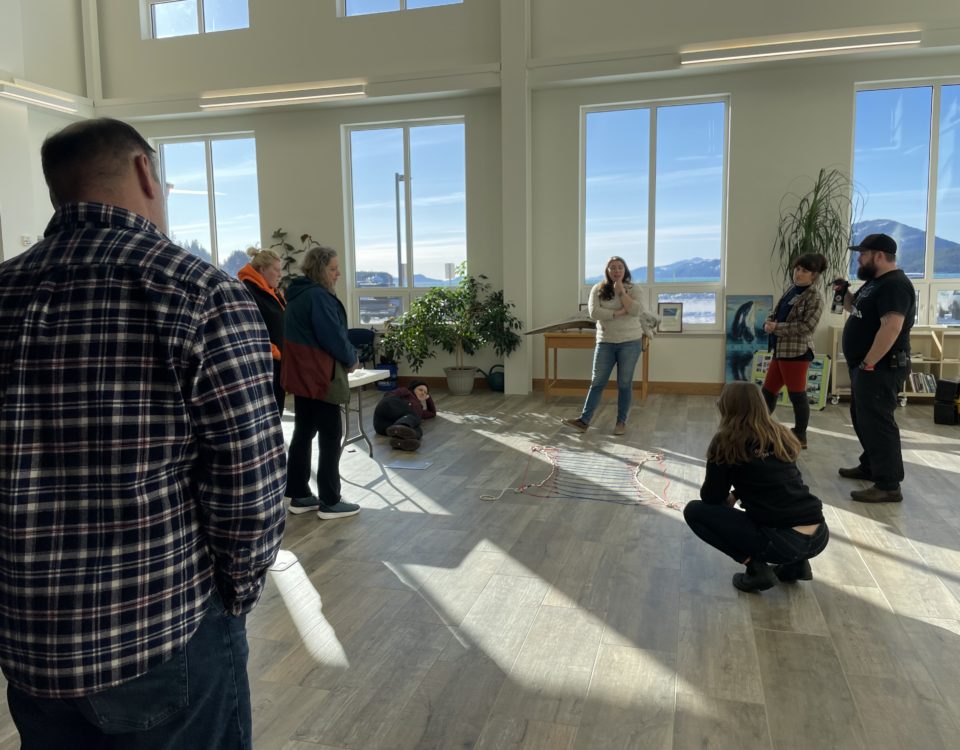Measuring air-sea CO2 flux at kelp farms

PROJECT
Quantifying farmed kelp atmospheric CO2 uptake through localized air-sea flux
Mariculture Research and Restoration Consortium: Mariculture and the Physicochemical Environment
Background
The growing concentration of carbon dioxide (CO2) in the atmosphere is the single greatest environmental issue of the present day. Even with a rapid acceleration of mitigation efforts in the next century, global surface temperature is still predicted to rise by at least 1.5 °C. Blue carbon, which is the removal of CO2 from the atmosphere through marine primary productivity, is presently an area of intense interest and has shown promise as a sustainable alternative for capturing carbon through enhanced photosynthesis. The kelp farming industry in Alaska expects to expand dramatically in the next two decades, increasing sustainable economic practices in the state with the added benefit of capturing atmospheric CO2. It is possible that the addition of farmed kelp during periods of localized heterotrophy may result in net autotrophy. We are actively measuring the air-sea CO2 flux within three kelp farms spanning the Gulf of Alaska to determine the capacity of farmed kelp to reduce atmospheric CO2 through air-sea flux.
Methods
We deployed a package of sensors at three farms across the Gulf of Alaska: Spinnaker Sea Farms in Jakolof Bay (Kachemak Bay), Alaska Ocean Farms in Kalsin Bay (Kodiak), and Royal Ocean Kelp Co. in Windy Bay (Prince William Sound). One sensor package was placed inside the farm and another upstream of the farm to estimate the net CO2 air-sea flux at the farm. These sensors will take hourly measurements of temperature, salinity, oxygen, and pH or pCO2 over three kelp farm seasons and these time series will be converted to air-sea CO2 flux. We will also determine the drivers of that flux regionally by correlating our measured environmental variables to net CO2 flux.
What We Will Learn
This project will estimate the net CO2 flux at three farms across the Gulf of Alaska, as well as provide time series of carbonate system measurements that are typically overlooked in water quality monitoring due to the associated expense and technical know-how.
PRINCIPAL INVESTIGATOR
Dr. Amanda Kelley
University of Alaska-Fairbanks
alkelley@alaska.edu
Collaborators
Mariculture Research and Restoration Consortium
RESEARCH PERIOD
2022-2031
FUNDING
Exxon Valdez Oil Spill Trustee Council
- Carbon flux sensor mooring deployed at Alf Pryor and Lexa Meyer’s farm during January 2024. Photo credit: Jonah Jossart.
- Arron Jones, Alf Pryor, and Josianne Haag (left to right) preparing the sensor mooring for deployment at Alf’s farm in Kalsin Bay. Photo by Jonah Jossart.
- Thea Thomas, Josianne Haag, and Cale Herschleb (left to right) paddling out to deploy a sensor mooring in Windy Bay. Photo by Dr. Amanda Kelley







